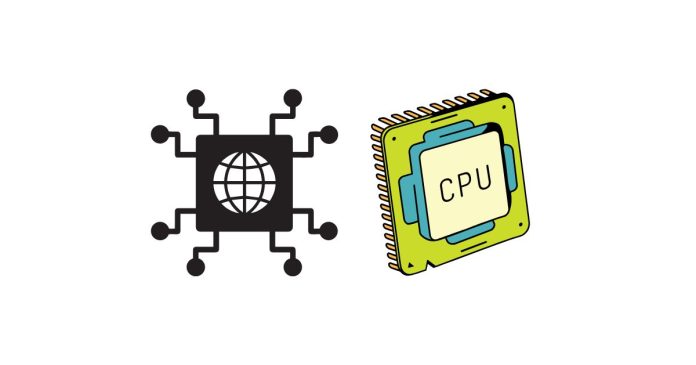Key Differences
| Feature | Processor (CPU) | Core |
|---|---|---|
| Definition | The physical chip that executes tasks. | A processing unit within the CPU. |
| Function | Executes programs and system operations. | Executes instructions within a program. |
| Scope | Can contain multiple cores. | Functions as an individual execution unit. |
| Performance | Overall performance depends on the number of cores and clock speed. | Performance depends on its speed and task allocation. |
| Multitasking | Improves with more cores. | Each core handles a separate task or thread. |
| Examples | Intel i5, Ryzen 7 (entire chip). | 4 cores in a quad-core processor. |
In computing, the terms core and processor (CPU) are often used interchangeably, but they refer to distinct aspects of a computer’s central processing unit. Here’s a breakdown of the differences:
1. Processor (CPU)
The processor, or Central Processing Unit (CPU), is the main component of a computer responsible for executing instructions. It serves as the “brain” of the computer.
- Key Features:
- A physical chip installed on the motherboard.
- Processes and executes tasks based on instructions from programs and the operating system.
- Can contain one or more cores.
- Examples:
- Intel Core i7, AMD Ryzen 5.
2. Core
A core is an individual processing unit within a CPU. Modern processors typically contain multiple cores, allowing them to handle multiple tasks simultaneously.
- Key Features:
- A subunit within the processor capable of executing instructions.
- Each core operates independently to handle different tasks (parallel processing).
- CPUs can have single, dual, quad, hexa, or even more cores.
- Examples:
- A quad-core CPU has 4 cores.
- An octa-core CPU has 8 cores.
3. How They Work Together
- A CPU is the entire processing unit. It houses one or more cores, which are responsible for executing individual instructions.
- For example, a dual-core processor has two cores that can work simultaneously on different tasks, improving multitasking and performance.
4. Practical Implications
- Single-Core Processor: Suitable for basic tasks like word processing and web browsing.
- Multi-Core Processor: Ideal for multitasking, gaming, video editing, and other resource-intensive applications.
Conclusion
The processor (CPU) is the hardware that performs computation and operations, while the core is a part of the CPU that processes tasks. Modern CPUs with multiple cores provide better performance, especially for multitasking and complex applications.



